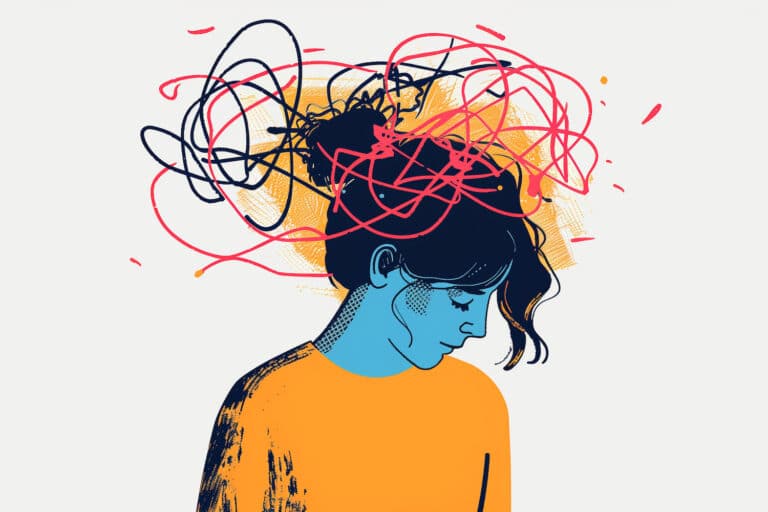The National Eating Disorders Association estimates that 20 million women meet criteria for an eating disorder at some point during their lives. In recent studies of NCAA athletes, over one-third of female athletes reported attitudes and symptoms placing them at risk for anorexia nervosa, and 25% had disordered eating behaviors.
Eating disorders affect all populations, but athletes are uniquely susceptible due to performance anxiety and pressures, high levels of competition, and sports that are more weight-sensitive.
Such sports include:
- Gravitational sports: Cross-country/track running, cross-country skiing, cycling, and ski jumping.
- Weight-class sports: Wrestling, judo, boxing, taekwondo, weightlifting, and lightweight rowing.
- Aesthetically judged sports: Gymnastics, figure skating, diving, synchronized swimming, and ballet.
Why are athletes at risk?
There are three key reasons why eating disorders are more common in sports where weight has a significant impact on the athlete’s performance:
- Athletes weighing more than an “optimal” weight risk performing less effectively.
- Athletes weighing above the upper limit for weight-class sports risk being unable to compete in an event.
- Athletes competing in aesthetically judged sports tend to receive tremendous focus and attention on their body composition and weight.
While the risk factors for an eating disorder are the same for individuals, for athletes, there are personal factors that may create a risk.
- Inaccurate belief that lower body weight will improve performance. Under-eating can lead the athlete to lose too much muscle, impairing performance.
- An imbalance between energy input and output results in weight loss. This risk is higher for those who burn high energy levels in their sport, such as distance runners.
- Low self-esteem, dysfunctional interpersonal relationships, a genetic history of eating disorders, chronic dieting, a history of physical or sexual abuse or other traumatic life experiences, and peer and cultural pressures to be thin.
- Coaches who focus only on success and performance rather than on the athlete.
- Performance anxiety, fear of failure. Athletes who feel they are not at peak performance may alter their body composition to bridge the gap. Often, when there is little or no improvement in performance, they attribute it to not losing enough weight or body fat and may increase their efforts.
- Social influences affect athletic ability and performance, including family and peer pressure.
Athletes with eating disorders are also at a higher risk for medical complications such as electrolyte imbalances and cardiac arrhythmia, caused by the strenuous physical activity and pressure put on their bodies. It is often difficult to convince athletes they need help for their eating disorder because they believe losing weight will help their performance.
What are the symptoms of an eating disorder?
Coaches and trainers often notice subtle changes in athletes that may indicate they are struggling with an eating disorder. It is essential to identify an eating disorder early, as that is one of the best predictors of a full recovery.
Some common symptoms may include:
- Decreased concentration, energy, muscle function, coordination, and speed
- Increased fatigue and perceived exertion
- Longer recovery time is needed after workouts, games, and races
- More frequent muscle strains, sprains, and/or fractures
- Slowed heart rate and low blood pressure
- Reduced body temperature and being sensitive to cold, cold hands and feet
- Complaints of light-headedness and dizziness, abdominal pain
- Poorer interaction with coaches/teammates
- Perfectionism
- Increased impatience, crankiness
- Increased isolation
- Difficulty with days off and tapering
- Avoidance of water or excessive water intake
- Preoccupation with their food
- Preoccupation with another’s food
- Ritualistic eating and/or avoidance of certain foods
- Excessive concern with body aesthetics
- Prolonged or additional training above and beyond that required for sport (e.g., extra sit-ups and laps, extra workouts)
- Athletes on the team are reporting concerns about an individual
Athletes may also work hard to hide their struggles, and personality shifts, ranging from being more withdrawn and isolated to acting excessively, may become more noticeable.
How do you get help?
Gold medalist Jessie Diggins felt endurance, pain tolerance, and persistence helped her at the 2018 Pyeongchang Olympics, which were also characteristics that fueled her eating disorder. Eating disordered behaviors began for Jessie at age 18 when she hit a growth spurt and developed larger hips and put on a little more body fat. Based on a misconception that the most successful skiers had no body fat, she began over-exercising and restricting food to be like her ski heroes. Like many individuals, when friends and family showed concern, she deflected and attributed her weight to increased racing. Jessie knew she had reached a dangerous level when she was making herself vomit, and her electrolytes became imbalanced. At this point, she knew it was an eating disorder – bulimia. Athletes, like Jessie, often feel their bodies are on display and push themselves past their limits to attain an unattainable standard of perfection. Jessie worked with her family to enter treatment for her eating disorder and can now say she has confidently recovered.
Athletes with eating disorders can benefit from group and individual therapy to help improve their self-esteem and to learn to cope with the complex emotions and changes associated with recovery. While there are many theoretical orientations and styles of therapy, evidence-based practices, such as the ones at Magnolia Creek, have been effectively proven for eating disorder recovery at the inpatient and outpatient levels of care.
At Magnolia Creek, we offer residential and partial hospitalization treatment programs in a safe, therapeutic environment designed to support clients as they uncover the contributing factors of their eating disorder. Each client has focused and individual care with regular one-on-one sessions with their primary and family therapist, dietitian, and medical staff. We work with our clients and their families to design a customized treatment plan that identifies treatment goals and provides the support needed to achieve them.
Our goal is to provide the highest level of care to our clients as they heal and strengthen their commitment to recovery, helping them to transition to a life beyond their eating disorder. Magnolia Creek is dually licensed to treat women (18+) struggling with an eating disorder or co-occurring mental health conditions such as depression and anxiety. If you or someone you know is struggling with an eating disorder, complete our contact form today.




